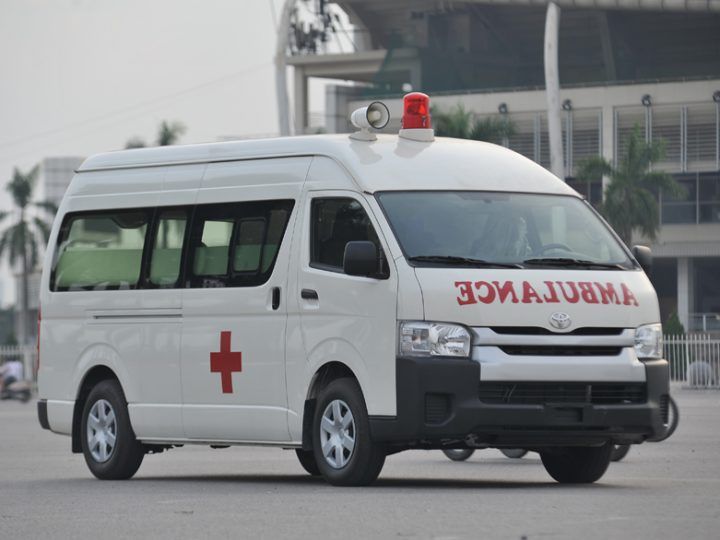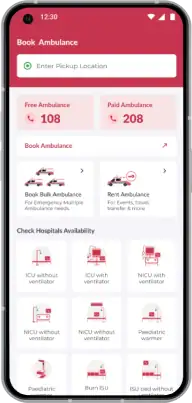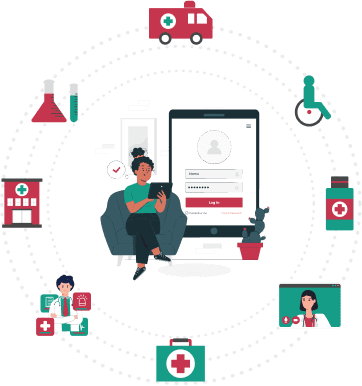In India, the ambulance service sector faces numerous challenges that hinder its effectiveness in providing timely medical assistance to those in need. Limited resources, traffic congestion and inefficient communication systems often lead to delays in emergency response, putting lives at risk. However, with the advancements in technology, there is a tremendous opportunity to revolutionize ambulance services and improve their efficiency across the country. In this blog, we will explore how leveraging technology can enhance ambulance services in India and address the existing limitations.
The Role of Technology in Ambulance Service Improvement
Let's discuss how technology can improve ambulance services in India:
Real-time tracking and GPS systems play a crucial role in improving ambulance service efficiency. By equipping ambulances with GPS devices, emergency response teams can accurately track and monitor their location. This enables efficient dispatching, as the nearest available ambulance can be assigned to a particular emergency. Real-time tracking also helps in avoiding traffic congestion by redirecting ambulances to less congested routes, saving valuable time during emergencies.
Mobile applications- can serve as powerful tools for streamlined communication and coordination in ambulance services. Through dedicated ambulance service apps, dispatch centers can easily receive emergency calls, locate nearby available ambulances and assign them to emergencies promptly. These apps can also provide essential information to paramedics en-route, such as the patient's medical history, allergies and any pre-existing conditions. Efficient communication and data exchange through mobile apps enhance the overall quality of care provided during transportation.
Integration of telemedicine and remote medical support- can significantly enhance ambulance services in India. Telemedicine allows medical professionals to remotely assess patients' conditions, provide initial guidance to paramedics and make critical decisions before they reach the hospital. This real-time consultation reduces the risk of misdiagnosis and helps in delivering appropriate care during transportation. Additionally, remote medical support can facilitate communication between paramedics and specialized medical experts, ensuring optimal care for patients with complex medical needs.
Emerging technologies such as drones can play a vital role in emergency medical transport. Drones equipped with medical supplies and equipment can swiftly reach remote or inaccessible areas, delivering necessary aid before an ambulance arrives. These drones can also provide real-time video streaming, allowing medical professionals to assess the situation and guide on-site responders. Integrating drones into the ambulance service infrastructure can significantly reduce response time and save lives, especially in hard-to-reach regions.
Electronic Health Records (EHR)- have the potential to revolutionize patient information management in ambulance services. By adopting EHR systems, paramedics can have instant access to a patient's medical history, allergies and prescribed medications. This information enables them to provide appropriate treatment and medication during transportation, enhancing patient safety. Seamless data transfer between ambulances and hospitals through EHR systems improves continuity of care and reduces the risk of errors or duplicated medical tests.
Overcoming Infrastructure Limitations
While technology offers immense potential, it is essential to address infrastructure limitations to ensure its effective implementation. Connectivity issues in remote areas need to be resolved to enable real-time communication and tracking. Governments and stakeholders should invest in improving internet connectivity and mobile network coverage, particularly in underserved regions. Additionally, establishing robust communication networks dedicated to emergency services can facilitate efficient communication between dispatch centers, ambulances and hospitals.
Collaboration with Stakeholders
Improving ambulance services with technology requires collaboration among various stakeholders. Governments should take the lead in promoting technology adoption by initiating partnerships with healthcare providers, technology companies and non-governmental organizations (NGOs). Such collaborations can facilitate the development of comprehensive technological solutions and encourage knowledge sharing. Engaging the community through awareness campaigns can generate support and participation, fostering a sense of responsibility towards emergency medical services.
Training and Skill Development
To effectively leverage technology, it is crucial to train ambulance staff in its proper usage. Training programs should focus on equipping paramedics with the skills to utilize technology effectively and efficiently. Special emphasis should be placed on the operation of GPS systems, mobile applications, telemedicine platforms and electronic health record systems. By ensuring that ambulance staff are trained in utilizing these tools, the overall quality of emergency medical services can be significantly enhanced.
Future Prospects and Recommendations
The future of ambulance services in India holds immense potential with emerging technologies such as artificial intelligence (AI) and Internet of Things (IoT). AI-powered algorithms can help predict emergency hotspots, optimize ambulance routing and provide real-time traffic updates to ambulance crews. Integration of IoT devices can enable seamless communication between ambulances, hospitals and traffic management systems, ensuring a coordinated and efficient response. To harness these technologies, policymakers should formulate supportive regulations and funding schemes. Encouraging innovation and research in the field of ambulance services will further drive advancements and improve emergency medical response in India.
Conclusion
In conclusion, the integration of technology has the potential to significantly improve ambulance services in India. Real-time tracking, mobile applications, telemedicine, drones and electronic health records can address the existing challenges and enhance the efficiency of emergency medical response. By overcoming infrastructure limitations, fostering collaboration among stakeholders and investing in training, India can leverage technology to revolutionize its ambulance services.
One such example of an ambulance service provider utilizing technology is MedCab. MedCab has embraced innovative solutions to enhance its services. With our advanced mobile application and real-time tracking, MedCab has successfully reduced response times, improved communication and provided better care during transportation. By adopting technology-driven strategies, MedCab sets an example for the industry and demonstrates the positive impact that technology can have on ambulance services in India.






